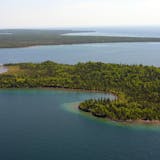Opinion editor’s note: Star Tribune Opinion publishes a mix of national and local commentaries online and in print each day. To contribute, click here.
•••
We are living in a new climate reality. The fingerprints of climate change are everywhere — from our forests and farmlands to our riverways and recreation patterns. As human-caused climate change continues to alter the place we call home, how can we reduce the risks we face now while planning for the decades to come?
This is the question I grapple with every day as a climate scientist and Extension specialist at the University of Minnesota. We know that while we seek to prevent climate change from getting worse, we must also prepare for our climate-changed future. When it comes to the practical steps necessary to prepare for the impacts of a warming world, many communities still lack the information, capacity and resources to proactively respond to their changing climate risks.
As our state gets warmer and wetter, for example, how can we best design or upgrade our stormwater systems unless we consider the range of plausible future precipitation patterns the state may experience in the 2060s and 2080s? A substantial and long-lived public investment like this could be rendered quickly obsolete if future climate conditions aren’t considered. How can we conserve and support resilient landscapes that are treasured across our state — including our forests, grasslands, lakes and rivers — if we aren’t actively managing lands in ways that build diversity and resilience to the climate risks they will face in coming decades?
That’s why my team at the University of Minnesota Climate Adaptation Partnership, in collaboration with the Minnesota Department of Commerce, has developed highly localized future climate projections for Minnesota and a public online tool to access the data. The tool, called MN CliMAT, provides detailed information about future climate conditions — including temperature, precipitation, ice cover and other variables — down to the 2.5-mile scale. That means Minnesotans can visualize how even specific towns may be affected.
MN CliMAT has been years in development, and throughout its creation we consulted community members, farmers, foresters, architects and more. Consider:
• For farmers and the agricultural industry, the tool can show changes in soil moisture — allowing for proactive planning and investments now in irrigation and other resilience strategies.



